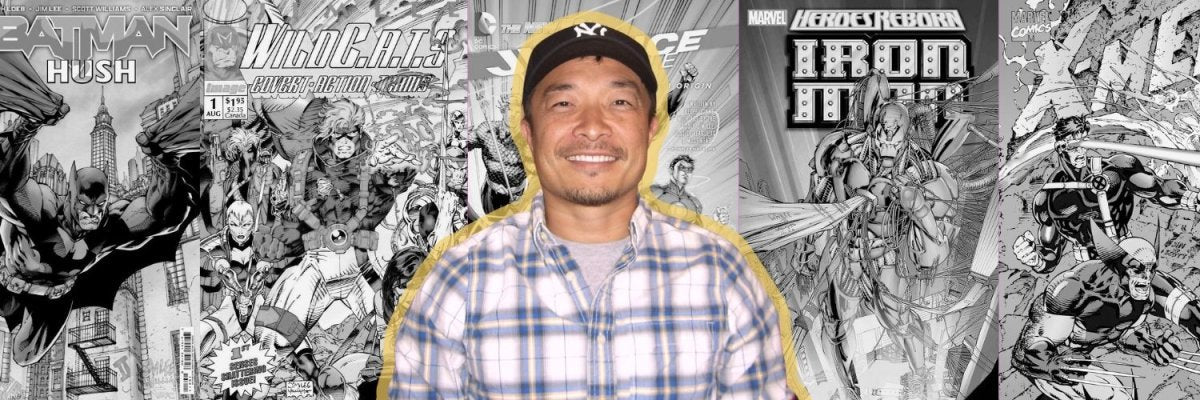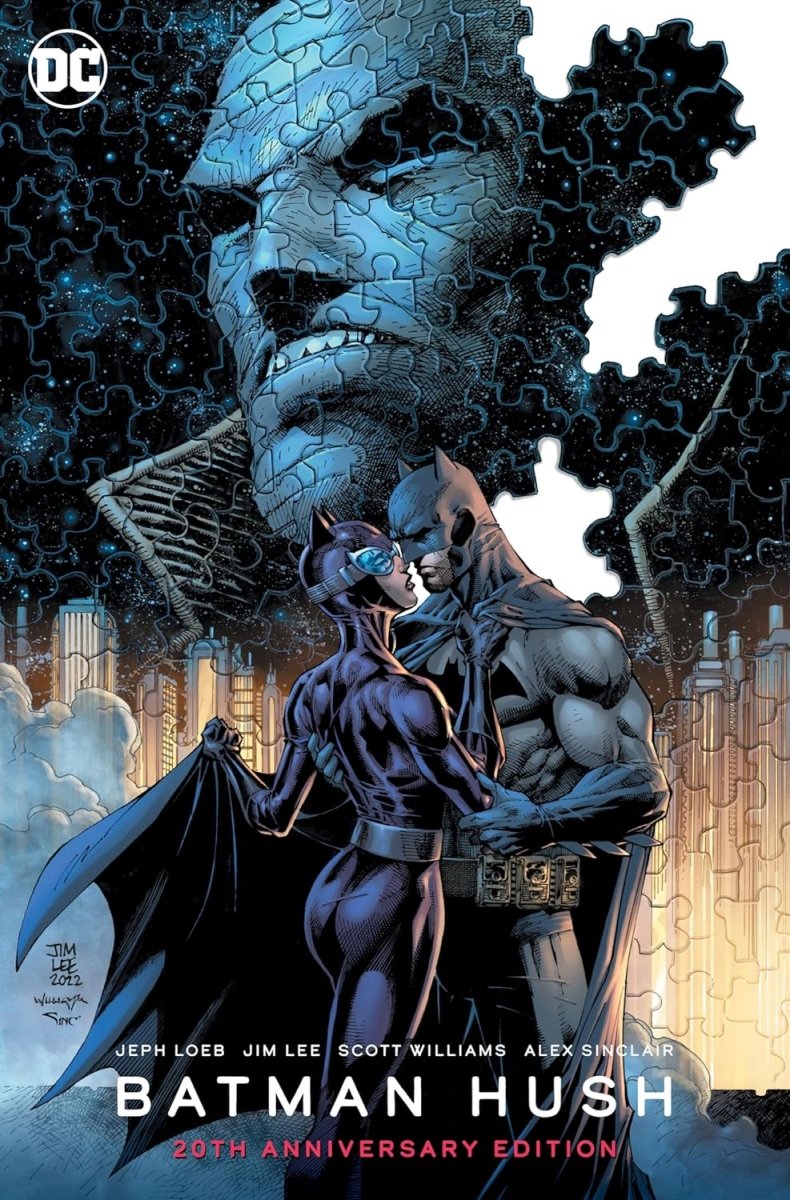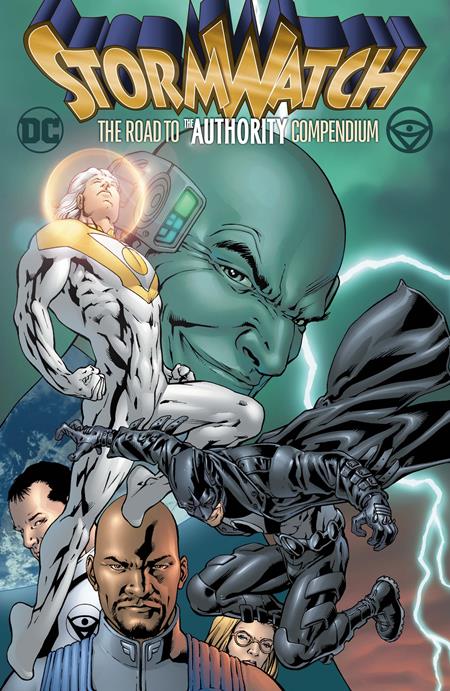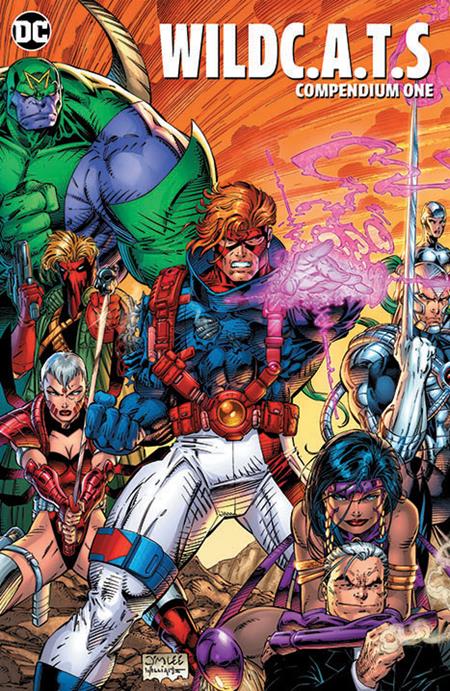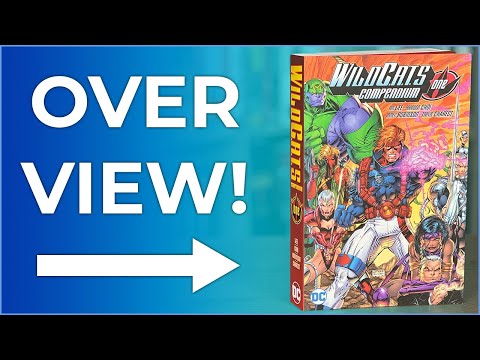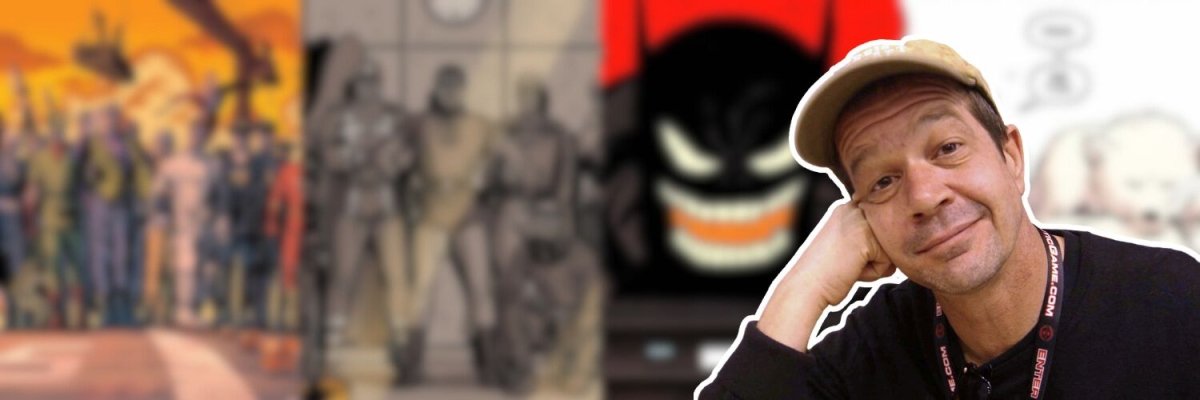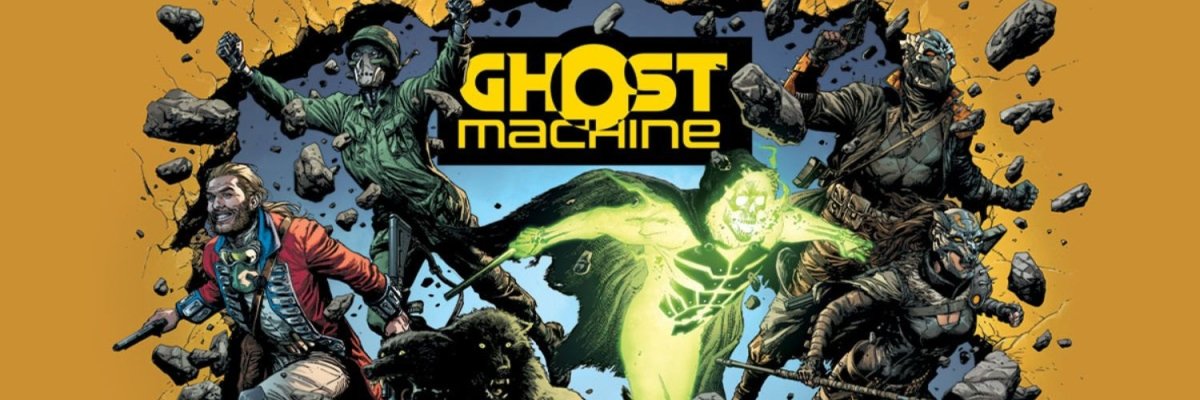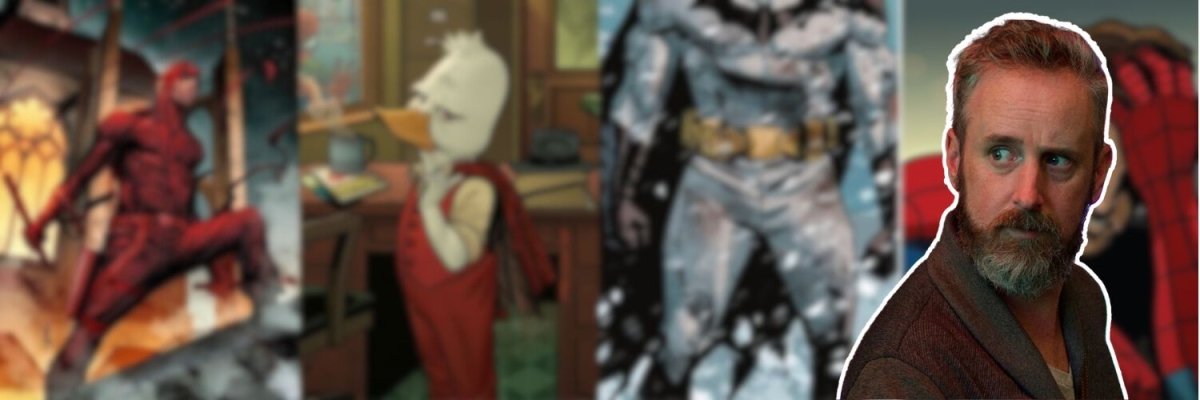
Written by Petar
Wanted to be an astronaut, ended up exploring comics instead.
He’s the co-author and penciler of the best-selling comic book of all time. He is one of the founders of Image Comics and WildStorm Productions, and the current publisher of DC Comics. He co-created comic book icons like Gambit and Hush. It’s no wonder Jim Lee is still the mythical legend he is!
The Art and Legacy of Jim Lee: Comic Book Icon and Industry Leader
Jim Lee was born in Seoul, South Korea, and spent his childhood there. When he was around five, he was hit by a truck and claims this made his parents even more protective. In an interview with the multimedia web portal Big Think, he summed up those early years in simple words: “Comics. Trauma. Art. That was the be-all, end-all of my childhood.”
The family moved to the United States during his elementary school years, where he delved into art for school and began reading comics – especially X-Men, with whom he felt a connection for being “outsiders” like him. This connection later extended to other characters like Spider-Man or Superman, who were either outcasts or created by non-white Americans. Lee says this has significantly influenced his career as an artist.
After a heated argument with his parents following graduation, he dedicated a gap year to breaking into comics, after which he promised to continue on the path to becoming a doctor, as they wished. He spent 8 to 10 hours a day drawing and unsuccessfully sending samples to publishers. It was only when he attended a comic con in New York and met editor Archie Goodwin in person that he managed to get his foot in the door – a moment that would soon shake up the comic book industry.
Dynamic Anatomy and Cinematic Spreads: The Jim Lee Visual Trademark
Jim Lee has made a name for himself in the comics industry with an art style that is instantly recognizable. It's one of those cases where, after seeing a single panel, you can easily say, “Oh, that’s Jim Lee!” He has served as an inspiration for many, many, many other artists.

His linework is legendary for being hyper-detailed, and his layouts are quite cinematic. While his figures are usually very muscular, there's something distinctive about his anatomy that makes it stand out. The poses he gives his characters are always dramatic and dynamic.
The designs he gave his characters have also become the stuff of legend. While working with Chris Claremont on X-Men, he created the new Blue & Gold costumes for the team, as well as the new outfits for X-Men #1 – designs that would be translated into the hugely popular ’90s cartoon and become some of the most recognizable character looks as a result.
There’s a reason for this. Every character Jim Lee works on ends up larger than life and looking cool as hell! While he was inspired by masters of the craft like Frank Miller and David Ross, his style is a unique blend of East and West – with a splash of manga influence too!
And then, there are his double-page spreads. As I mentioned before – everything feels cinematic with this man – and sometimes, he loves to take it over the top! Take, for example, his X-Men spread that takes four pages to showcase all the characters. That image has been replicated and referenced over the years – just like many other things he’s done!
And speaking of the crazy work on X-Men…
Jim Lee’s Marvel Breakthrough: Redefining the X-Men and Creating Comic Book History
Jim Lee began his professional career in 1987 working for Marvel Comics. He started by doing art for some “middle-tier” books like Alpha Flight and The Punisher War Journal, but soon moved on to The Uncanny X-Men. He first filled in for artist Marc Silvestri with issues #428 and #256–258, before taking over from issue #268 (with that iconic Cap + Wolvie + Black Widow cover).
Alongside Claremont, Lee ensured the X-Men would become the giant they were in the 90s, creating the character of Gambit. This is because the duo didn’t just tell great stories – they completely changed the world of X-Men, and it resonated.
First, Jim Lee’s redesigns for the Blue and Gold X-Men lineups have now become iconic in their own right. Furthermore, his designs became the templates used in the 90s X-Men animated series – which brought the X-Men into the mainstream and cemented the looks of characters like Cyclops, Jean Grey, Wolverine, Rogue, Gambit and Storm to this day.
And then there’s X-Men #1 (published in 1991) – the start of a second ongoing title (featuring the Blue Team, while the Gold Team remained in the pages of Uncanny). Jim Lee not only penciled this issue but also shares co-writing credits, and it quickly became the best-selling American comic book of all time, selling almost a staggering 8.2 million copies – a record it still holds to this day, over thirty years later.

As I already mentioned, the gatefold cover showing the team fighting Magneto in a spectacular artistic display has remained ingrained in pop culture to this very day – but that was just the start of Lee’s work on the title. What this man did to the X-Men shaped the way superheroes were drawn in the 90s and even today. They are stylish, powerful and dynamic. Each pose bursts with energy, whether they’re fighting villains or having a picnic. And while they’re plagued by the same disease that affected many 90s heroes – pouches – Jim Lee somehow makes them all work for a spectacular visual display!
In 1992, trouble was brewing for Marvel. In a move worthy of its own article, seven Marvel creators decided to leave the company and start their own publishing business. The decision was mainly driven by the fight to own the creator licenses and copyrights to the properties they created – which was not the case with Marvel and DC at the time. These seven people would go on to create Image Comics – and Jim Lee was one of them.

Within Image, Lee was able to launch his own studio called Aegis Entertainment, which was later renamed WildStorm Productions. The first title Jim Lee worked on? WildC.A.T.s! (For the sake of simplicity, I’ll just write Wildcats from now on. You’ll forgive me, right?)
The Covert Action Teams book is everything you love about the ’90s – wild action, alien wars, freaking metal characters, and non-stop excitement. The story centers on a war between two alien races – the Kherubim and the Daemonites – which, of course, involves Earth. The book was written by Brandon Choi, with Lee on art, and it launched a franchise of its own, including toys, cartoons, and crossovers with other titles.
Wildcats ran wild (pun intended) and long – with multiple reboots and many wildly (again, sorry!) talented people joining the team – even Alan Moore contributed to the story.
What makes the book special is – of course – Jim Lee’s art. The energy, the drama, the style – everything he brought to the X-Men, he cranked up to 11 while working on his own terms, and it shows. The Absolute Wildcats by Jim Lee will be the best way to experience his art later this year, but Wildcats Compendium Volume 1 is already on the shelves if you’re impatient.
Heroes Reborn, Stormwatch, and WildStorm’s Lasting Impact on Modern Superheroes
A few years later – in 1996 – Lee and fellow Image co-founder Rob Liefeld were offered a chance to return to Marvel and gain a bit more control over some heroes – in an era known as Heroes Reborn. The idea was to relaunch heroes like Captain America, the Fantastic Four, Iron Man, and the Avengers in a new universe, with new #1 issues. Lee would plot Iron Man and both plot and illustrate Fantastic Four with his WildStorm collaborators, while Liefeld tackled the remaining two titles.
What we get is an excess of ’90s comic books – unapologetically muscular, pouched and armored-up supes and villains, with hyper-detailed art that became the trademark of the era. Lee took over Liefeld’s titles after he left the project, but a year after the start, the imprint was folded back into Marvel’s continuity and Lee returned to work with WildStorm full-time.
There, he created Stormwatch with Brandon Choi, but also used WildStorm to support a wide range of creative ideas and creators. Among these, they published The Authority and Planetary, two works by Warren Ellis that often don’t even need an introduction.
Then, in 1999, Jim Lee sold WildStorm to DC, which incorporated it into its universe, having the characters interact with Batman, the Justice League and the like, and establishing them in the larger comics mythology.
Hush: The Blockbuster Batman Story That Redefined Gotham’s Dark Knight
WildStorm was sold because Lee had become a family man and felt that the publishing role was taking a toll on his work as an artist. He returned to art in style – first with Batman: Black and White, a backup story for Batman: Gotham Knights #1. However, it is his work with writer Jeph Loeb that would become the stuff of legend.
Batman #608–619 collects the story Hush – one of the biggest Batman hits of the 21st century. Loeb had already made his name with classics like Long Halloween (whose Absolute Edition is releasing next year and is one of the best Batman stories ever told!) – but teamed up with Jim Lee, they created a story that packs a more explosive punch than Nolan’s movies!

Utilizing the artistic talents of his collaborator, Loeb writes a story that feels like a tour of all things Gotham and all the greatest hits – the new mysterious villain Hush brings in everyone from Batman’s cast: Catwoman, Joker, Harley, Poison Ivy, Superman, and many more!
These talents are used well – it’s Jim Lee’s artwork that makes this story truly legendary. Under Lee’s pen, Gotham is alive and atmospheric like seldom before. He brings a cinematic touch, as in his previous works, but adds a kind of romanticism – the alleys are moody, the rooftops rain-soaked, everything alive and visceral. The action is, of course, top-notch, as you’d expect from Lee – with precise anatomy and dramatic angles galore!
Hush is also one of those stories that has been collected again and again:
- The cheapest option is to get the pocket-sized DC Compact edition of Batman: Hush.
- Batman: Hush 20th Anniversary hardcover pulls the curtain back to give us a look into the creation process of this breathtaking tale.
- The best way to enjoy the amazing art is Batman: Hush Absolute Edition which is being released in October this year.
- Finally, Batman: The Hush Saga Omnibus collects not only this story but further Hush appearances – though the art and the writing in these change with each of them.
Of course, it’s worth noting that the two giants have joined forces once more to bring us a story for the new All-In Batman – starting with Batman #158, Loeb and Lee are giving us Hush 2 and returning to form, proving they’re still in the game decades later!
The New 52 Era: Justice League, Redesigns, and Cinematic Comic Book Action
After playing on Gotham, Jim Lee’s next stop was Metropolis and the Man of Steel. Teaming up with writer Brian Azzarello, Lee illustrated Superman issues #204–215 to bring the story Superman: For Tomorrow to life (this is where the iconic Superman cover comes from).
For Tomorrow focuses on the mysterious disappearance of a million people – including Lois Lane – leaving behind only shadows. The story has Superman dealing with isolation and responsibility, and Lee’s Superman is vulnerable while still being larger than life (just like Superman should be). It’s mysterious, philosophical, and a fun read!

Jim Lee would return to these heroes again in 2011, as part of DC’s New 52 relaunch. Now partnered with writer Geoff Johns, the team redesigned the entire Justice League – they gave us the controversial Superman costume (which served as the inspiration for the upcoming James Gunn movie) – and it is usually Lee’s artwork that you will see in most of the promos for the era.
This Justice League is pure spectacle – cinematic action and A-list drama you’d expect from DC characters: grand and memorable. The layouts are, as always, highly dynamic, and the book feels like a blockbuster movie in comic form. The writers and artists changed, but they followed in the footsteps this team had started.
There are two ways to experience the story:
- The cheaper trade paperback option: Book 1 and Book 2
- The more premium, omnibus option: Volume 1 and Volume 2.
Publisher, President, and Artist: Jim Lee’s Continued Influence at DC Comics
Jim Lee is still deeply integral to the comic book industry. Following the departure of then co-publisher Dan DiDio, Jim Lee became the sole Publisher of DC. He was named President of DC Comics in May 2023.
Even with all this, he remains very approachable and radiates a love for art. Recently, as I mentioned, he returned to work on Batman with Loeb. He also streams on Twitch, sharing his art process, thoughts, and more. It’s very entertaining and informative to watch – and just plain cool coming from a higher-up in a comics company. The man has set many precedents for the industry, and he keeps doing it – which makes him very relevant to this day. Plus, you know the art you’ll get from him will always be absolutely bonkers!

